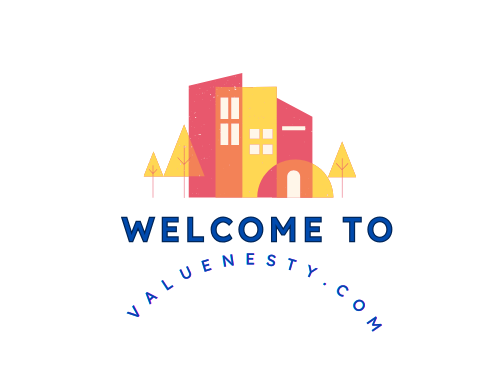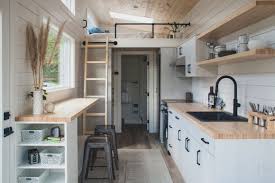Introduction:
In an era marked by increasing environmental awareness and a growing desire for minimalist living, tiny homes have emerged as a revolutionary housing option. These compact dwellings not only offer a simpler way of life but also serve as a powerful solution to the challenges of urbanization and sustainability. For individuals seeking to reduce their carbon footprint without compromising on comfort, tiny homes present a compelling alternative. This article explores the allure of tiny homes for sale, their benefits, and considerations for prospective buyers looking to embrace sustainable living.
1:Benefits of Tiny Homes for Sale:
Affordability and Financial Freedom:
Tiny homes are considerably more economical than conventional houses,making home ownership more attainable.With lower upfront costs, reduced maintenance expenses, and often minimal utility bills, tiny homes enable financial freedom and a decreased reliance on mortgages and loans.
Environmental Sustainability:
Designed with eco-friendly materials and energy-efficient systems, tiny homes promote sustainable living practices. Their small size inherently requires fewer resources to build and maintain, minimizing environmental impact and contributing to a greener planet.
Many tiny homes are constructed on wheels permitting owners to move easily. Whether you desire a change of scenery or wish to live off-grid temporarily, the mobility of tiny homes offers unparalleled flexibility compared to conventional housing.
Simplified Living and Minimalism:
Living in a tiny home encourages a minimalist lifestyle, emphasizing quality over quantity. By reducing clutter and unnecessary possessions, residents often experience a sense of liberation, focusing more on experiences and personal fulfillment.
2:Considerations Before Buying a Tiny Home
Zoning and Legal Regulations:
Before purchasing a tiny home, it’s crucial to research local zoning laws and building codes. Some areas may have restrictions on where tiny homes can be placed or require specific permits, affecting your ability to legally reside in your chosen location.
3:Space Limitations and Design Efficiency:
While the compact size of tiny homes is a defining feature, it also necessitates careful planning of interior layouts and storage solutions. Prospective buyers should assess their lifestyle needs and prioritize efficient design to maximize usable space without compromising comfort.
Utilities and Off-Grid Options:
Tiny homes often utilize alternative energy sources such as solar panels and composting toilets to minimize reliance on public utilities. Consider the feasibility of off-grid living and the associated costs and maintenance requirements when evaluating different tiny home models.
5:Financing and Insurance Options
Financing Challenges:
Securing financing for a tiny home can be more challenging than traditional mortgages due to their unconventional nature and fluctuating resale values. Research specialized lenders or explore personal loans and RV financing options tailored to tiny home buyers.
Insurance Coverage:
Finding adequate insurance coverage for tiny homes may require specialized policies that consider factors like mobility, structural materials, and environmental risks. Consult with insurance providers experienced in tiny home coverage to safeguard your investment effectively.
6:Tiny Homes for Sale: Diverse Designs and Customization:
Architectural Diversity:
Tiny homes come in various architectural styles, from sleek modern designs to rustic cabins and eco-friendly structures. Explore different aesthetics and floor plans to find a tiny home that aligns with your personal taste and lifestyle preferences.
Customization Options:
Many manufacturers and builders offer customizable features and upgrades, allowing buyers to tailor their tiny homes to specific needs. Whether you prioritize energy efficiency, accessibility, or innovative storage solutions, customization ensures your tiny home reflects your unique vision.
7:Finding Tiny Homes for Sale:
Online Listings and Platforms:
Numerous websites specialize in listing tiny homes for sale, showcasing a variety of designs, sizes, and price ranges. Utilize platforms like Tiny House Listings, Tiny House Marketplace, and Airbnb for listings and inspiration.
Custom Builders and DIY Options:
For those seeking a personalized touch, consider working with custom tiny home builders or exploring DIY plans. Custom builders can tailor the design to your specifications, while DIY options allow for creativity and cost savings.
Real Estate Agents and Networking:
Engage with real estate agents knowledgeable about tiny homes or attend tiny house events and workshops to network with builders and owners. Building connections can provide insider tips and access to new listings.
The Appeal of Off-Grid Tiny Homes:
Solar Power and Renewable Energy Sources
Off-grid tiny homes rely on renewable energy sources like solar, wind, and hydroelectric power. These solutions allow homeowners to live independently from conventional utilities while reducing energy costs.
Self-Sustaining Systems:
Incorporating composting toilets, rainwater harvesting systems, and energy storage batteries can make your tiny home self-sustaining. These systems are essential for those interested in off-grid living and lowering their ecological footprint.
8:Tiny Home Communities: A Growing Trend
What Are Tiny Home Communities?
Tiny home communities are growing in popularity across the U.S. and worldwide. These communities offer shared spaces, a sense of community, and often include eco-friendly amenities like community gardens or renewable energy systems.
The Benefits of Joining a Tiny Home Community:
Living in a tiny home community can provide support, shared resources, and reduce living costs. Additionally, these communities often foster a sustainable lifestyle and provide a network of like-minded individuals.
9:Customization and Design Flexibility of Tiny Homes:
Interior Design Options for Tiny Homes:
Despite their small size, tiny homes can be incredibly stylish and customizable. From multi-functional furniture to creative storage solutions, interior design plays a key role in maximizing space and comfort in a tiny home.
Innovative Storage Solutions:
Smart design and innovative storage solutions are essential in a tiny home. Consider built-in shelving, underfloor storage, and foldable furniture to optimize living space.
10:Tiny Homes as Vacation Rentals or Investment Properties:
Tiny Homes as Airbnb Rentals:
Many people purchase tiny homes not only for personal use but also as vacation rentals. Tiny homes on platforms like Airbnb can generate passive income, offering a unique stay experience for travelers.
Investing in Tiny Homes:
Tiny homes are an affordable way to invest in real estate, with the potential for high returns when used as short-term rentals. Their low cost of ownership and eco-friendly appeal make them an attractive investment opportunity.
Challenges of Tiny Home Living:
Adjusting to Small Space Living
Transitioning to tiny home living requires an adjustment to smaller spaces and fewer possessions. Prospective owners must be prepared to embrace minimalism and a more intentional lifestyle.
Utility Hookups and Water Supply:
For those who choose to live in tiny homes permanently, securing utility hookups (like electricity, water, and sewage) can be challenging depending on location. Planning for utilities is an essential consideration before buying or building a tiny home.
Conclusion:
Embracing a lifestyle centered around tiny homes for sale represents more than just downsizing—it’s a commitment to sustainable living, financial freedom, and architectural innovation. As the demand for eco-friendly housing solutions continues to rise, tiny homes offer a promising avenue for individuals seeking a simpler, more intentional way of life. Whether you’re motivated by environmental concerns, financial considerations, or a desire for greater flexibility, exploring the world of tiny homes can lead to profound personal and societal benefits.
FAQs :
1:Are tiny homes legal everywhere?
Tiny home legality varies by location. Examining local zoning regulations and building codes before buying.
2:What are the maintenance costs of a tiny home?
Maintenance costs are typically lower than traditional homes but can vary based on size, materials, and location.
3:Can I finance a tiny home like a regular house?
Financing options exist, including personal loans and specialized RV loans, though they differ from traditional mortgages.
4:How much do tiny homes cost?
Prices vary widely based on size, design, and amenities, ranging from affordable to luxury models.
5:Are tiny homes energy-efficient?
Many tiny homes are designed for energy efficiency, often incorporating solar panels and other sustainable technologies.
6:Do tiny homes retain their value?
Resale values can fluctuate. Factors such as location, design, and market trends influence resale potential.
7:Can I live in a tiny home year-round?
Yes, with proper insulation and utilities, many people comfortably live in tiny homes throughout the year.
8:What are the challenges of living in a tiny home?
Challenges may include space constraints, zoning restrictions, and adjustment to a minimalist lifestyle.
9:Are there communities or parks for tiny homes?
Yes, tiny home communities and parks exist, offering shared amenities and a supportive community environment.
10:How do I choose the right tiny home for my needs?
Consider factors like size, design, mobility, and customization options to find a tiny home that suits your lifestyle and preferences.

